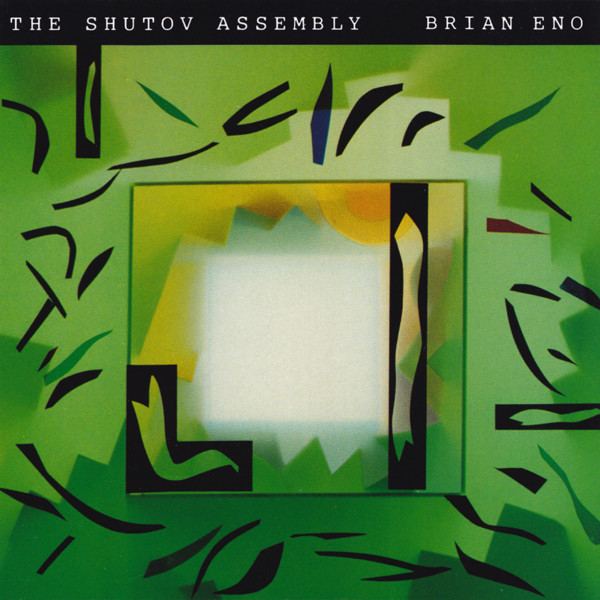Recorded 1985 through 1990 Release date 10 November 1992 Label Opal Records | Length 57:04 | |
 | ||
Similar Brian Eno albums, Ambient music albums | ||
The Shutov Assembly is the thirteenth solo studio album by British musician Brian Eno, released on 10 November 1992 on Warner.
Contents
Overview
The album is dedicated to Russian artist Sergei Shutov, and was created as an assembly of tracks for him, as he had mentioned to Eno the difficulty he had of getting Eno's music in the then-communist Russia.
On the rear cover of the CD, the ten tracks of nine letters are arranged in a grid as seen in a word search puzzle. This appears to reflect Eno's known affinity for word games, but there is a purely coincidental reason for why they are so titled.
The album's Rykodisc entry describes it as "a journey through Eno's sumptuous audio-visual installations from around the world, each track touching down on a particular event and atmosphere."
Track listing
- "Triennale" – 4:02
- "Alhondiga" – 3:16
- "Markgraph" – 3:39
- "Lanzarote" – 8:37
- "Francisco" – 4:44
- "Riverside" – 3:50
- "Innocenti" – 4:19
- "Stedelijk" – 5:26
- "Ikebukuro" – 16:05
- "Cavallino" – 3:06
The music
Talking to Mojo magazine in 1998, Eno explained that The Shutov Assembly tracks "were originally proposals for orchestral pieces; what I wanted to do was make them, using my normal tricks and devices, and then present them to an orchestra and ask them to try and copy them accurately – so if this sound goes "dnnngeeeee", you might need to have a damped tubular bell and a violin player working together to make that one sound. I thought it would be an interesting way to use an orchestra, to force it to use its instruments in a different way". The Netherlands Metropole Orkest played two performances of the music in June 1999 at the Holland Festival, which ran from 5 to 26 June in Amsterdam, the first of which was broadcast live on Dutch radio.
Though the music can certainly be classified amongst his other ambient works, most of the compositions have a certain "dark" feel to them. In an interview, Eno said "it's the association with danger that I didn't use to like, and it's exactly that, what I do like now". He described The Shutov Assembly as "sort of the out-of-town version of it, the outside-the-city-limits version of danger".
Credits
Songs
1Triennale
2Alhondiga3:18
3Markgraph3:42
